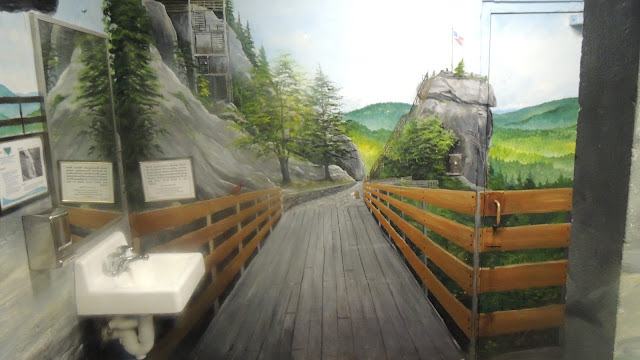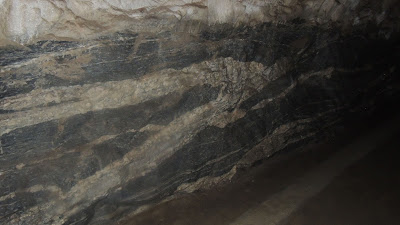This is a representation of what the Virginia Military Institute (VMI) in Lexington, Virginia, looked like in 1858 just prior to the Civil War. It began in 1839 as America's first state-supported military college, the vision of a local attorney, J.T.L. Preston. (What's with the folks of the mid-1800's, naming their kids with three names or initials?) Preston's vision was to create "fair specimens of citizen-soldiers." I'm all for that!!
This building housed the state's arsenal in Lexington, and Preston thought it would be a great idea to house the college there and let the students guard the weapons. Two for the price of one; I'm all for that!!
The first student body consisted of 23 cadets (all male back then) and one of the early faculty members was none other than Thomas J. Jackson - later and forever after known as "Stonewall" Jackson. (Who knew that a college professor would become one of the Civil War's greatest generals?)
Another faculty member was Matthew Fontaine Maury, a.k.a. "Pathfinder of the Seas," because of his work in charting ocean currents. Think about how important that was in the mid-1800's. Where one could go in the world was determined by wind and currents in the ocean because all ships were powered only by the wind and currents! Ocean currents were the super highways of the oceans until the steam engine came along. Can you imagine how incredibly difficult it was to map anything in the 1800's much less an
ocean!
During the Civil War the cadets of VMI were a part of the contingent that helped preserve order during the execution of John
Brown at Harpers Ferry in 1859. John Brown's plan was to instigate a major slave rebellion, and with 18 men he attempted a raid on the arsenal at Harpers Ferry. They were caught and executed. The VMI cadets, interestingly enough, also helped train recruits for the Rebel army. In all, they were called on fifteen different times for active participation in defense of the Confederate States of America. (C.S.A.)
The cadets most notable achievement during the Civil War, however, was at the battle of New Market, Virginia in 1864. The entire student body of 257 cadets turned out at the request of Major General John C. Breckinridge even though some of the cadets were only 15 years old. He hoped to just keep them in reserve, let them guard wagons maybe, instead of actually participating in the battle.
Just to reach New Market, the cadets had to march eighty miles in just four days - and then were immediately thrown into the war. Do you think
you could walk twenty miles in a day? They were students, not soldiers coming out of basic training! And
four days of marching?! They were exhausted to begin with!
The cadets were formed up with the rest of the Confederate soldiers but toward the rear as reserve. The rebel's line of attack was through thick mud, and they cleared those "damn Yankees" out of New Market in about an hour and a half. Then the Union's 34th Massachusetts under Union General Sigel began to break down Breckinridge's line, so he ordered the cadets forward into the breach. They marched across a freshly plowed wheat field during a pouring rain - and most lost their shoes due to the sucking mud and muck that they had to push through. That field on Bushong's Hill is now known as the Field of Lost Shoes.
Use your vast and vivid imaginations, my children, and conjure up what it must have been like for the Bushong family to stand inside their home and watch the advancing Confederate army cross their fields.
Working with seasoned rebel fighters, the cadets, in the lead, were able to push back Sigel's troops, forcing his men from the field and completely out of the Shenandoah Valley. (I wonder how Sigel must have felt when he realized he'd been beaten by a bunch of Rebel cadets???)
It was a victory! But at what cost? Of the 257 cadets, 10 were either killed outright or mortally wounded. It was the only time in American history when an entire student body participated in pitched combat with such casualties.
Since 1866, each year, on May 15, the anniversary of the Battle of New Market, the cadets at VMI form up and pass in review at the campus memorial to honor their comrades killed in battle. Their names are called and, with each name, a cadet in the ranks responds, "Died on the Field of Honor, Sir." The Roll of Honor is then given to the VMI Commandant and a wreath is laid at each of the cadets' grave markers beneath a memorial statue entitled "Virginia Mourning Her Dead." That statue was created by world-renowned sculptor, Moses Ezekiel, who was a cadet at VMI and actually participated in the Battle of New Market with the rank of private.
Later in 1864, Union Major General Phillip Sheridan came to the Shenandoah Valley. He destroyed the buildings at VMI, but never damaged the spirit of VMI at all.
Today, VMI accepts candidates from all over the world, both men and women.
 |
| "Don't Do Ordinary. We haven't since 1839." |
VMI, emphasizes the qualities of honor, integrity, and responsibility, and has graduated men such as George C. Marshall who became a General in the Army and Secretary of State, and is the only soldier to ever win the Nobel Prize for Peace! VMI has also produced Rhodes Scholars and a Supreme Court Justice, NFL coaches, CEO's of Fortune 500 companies, actors, best-selling authors, a modern-day Christian martyr, and seven recipients of the Medal of Honor - all of this while providing a four-year undergraduate degree in engineering, sciences and liberal arts. (Could that be because they have a faculty-student ratio of 11:1? Sounds grand to me!!)
My sincerest congratulations to VMI !!












































